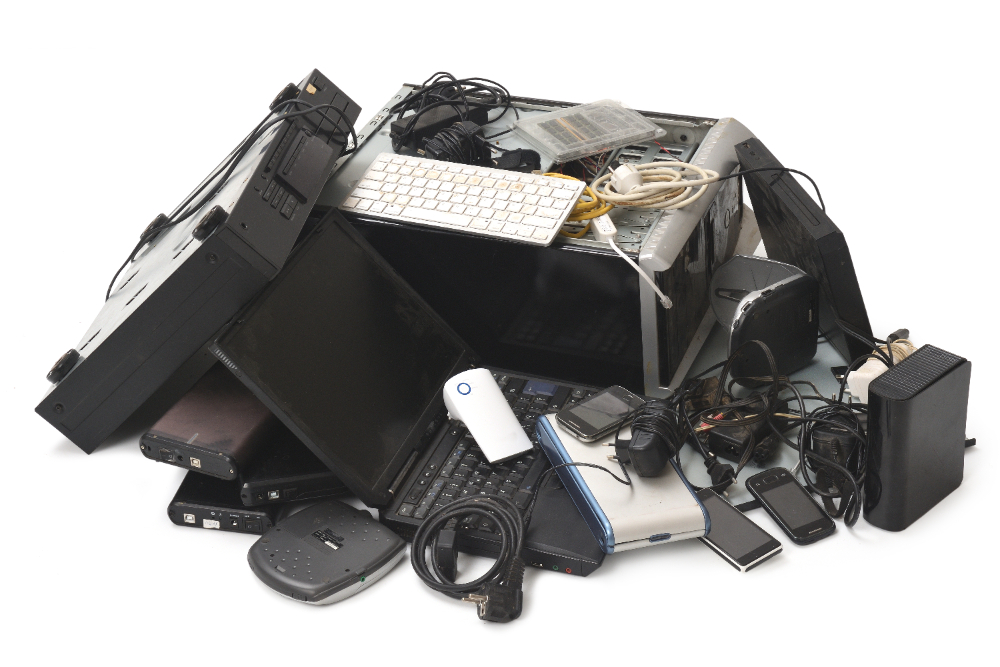A Rising Tide of E-Waste: How Recycling Company Leaders Can Turn a Crisis into Opportunity

The global e-waste crisis is intensifying at an alarming pace, posing serious threats to human health, the environment, and the economy. For recycling industry leaders—CEOs, CXOs, and decision-makers—this challenge also presents a unique opportunity. By embracing innovative strategies, recycling companies can not only grow their organizations but also contribute to a more sustainable and equitable world.
E-waste comprises discarded electrical and electronic devices, including laptops, smartphones, medical equipment, and more. The figures are staggering:
By the end of this decade, global e-waste could reach 5 million metric tonnes annually, 1,000 times more than in 2023.
E-waste currently accounts for 70% of total global waste, yet less than 20% is formally recycled.
Toxic substances in e-waste, such as mercury and PAHs (polycyclic aromatic hydrocarbons), harm human health and the environment, causing long-term damage.
Artificial intelligence (AI) has exacerbated the problem. With its growing reliance on high-powered data centers and short server lifespans, AI-driven technology significantly increases e-waste production and energy consumption. Data centers already account for over 1% of global energy use, a figure set to triple by 2030.
For recycling industry leaders, the stakes are high. E-waste management represents both a pressing sustainability challenge and a multi-billion-dollar business opportunity.
Environmental Impact: Toxic chemicals in e-waste contaminate soil, water, and air. Burning or improperly recycling electronics releases harmful pollutants, further exacerbating climate change.
Health Risks: Exposure to hazardous materials in e-waste has been linked to cancer, reproductive issues, and developmental problems in children.
Economic Loss: The lack of formal recycling leads to the loss of valuable materials like gold, platinum, and rare earth elements, which could be recovered and reused.
Recycling companies must adopt a multifaceted approach to tackle the e-waste crisis while driving organizational growth.
1. Adopt Circular Economy Principles
Transitioning to a circular economy model can significantly reduce e-waste. This includes:
Extending Product Lifespans: Repair and refurbish electronics to maximize their utility.
Component Reuse: Salvage and repurpose valuable materials from discarded devices.
Advanced Algorithms: Use AI to optimize recycling processes and reduce computational waste.
2. Invest in Green Design
Encourage manufacturers to integrate eco-friendly principles into product design:
Biodegradable Components: Replace toxic materials with biodegradable alternatives.
Durable Hardware: Create electronics with longer lifespans to minimize turnover.
Modular Design: Promote designs that allow for easier repairs and component upgrades.
3. Raise Public Awareness
Educating consumers about responsible e-waste disposal is crucial. Recycling companies can:
Launch awareness campaigns about certified e-waste recycling centers.
Partner with governments and NGOs to promote sustainable disposal practices.
Establish buyback programs to incentivize consumers to return old devices.
4. Leverage Policy Advocacy
Work with governments to strengthen e-waste regulations:
Advocate for stricter collection and recycling standards.
Push for mandatory producer responsibility programs to ensure manufacturers contribute to recycling efforts.
Encourage investment in innovative recycling technologies.
5. Build a Robust Recycling Ecosystem
Invest in cutting-edge recycling infrastructure to improve efficiency and safety:
Develop facilities that can safely handle hazardous materials.
Employ AI-driven sorting and processing technologies to streamline operations.
Collaborate with tech companies to design systems that recover rare and valuable materials.
To stay competitive in the evolving recycling industry, leaders must embrace modern operational models like the Virtual Delivery Center (VDC). A VDC is a cloud-based hub that enables businesses to scale resources, access global talent, and leverage advanced technologies on demand.
How VDCs Transform Recycling Operations
Scalability and Flexibility:
VDCs allow recycling companies to scale their operations rapidly. Whether ramping up to meet increased demand or deploying specialized teams for complex projects, VDCs offer unparalleled agility.
Access to Expertise:
Recycling is a multidisciplinary field requiring expertise in environmental science, engineering, and technology. VDCs provide access to a global talent pool, ensuring companies can tap into the right expertise when needed.
Enhanced Efficiency:
By integrating AI and machine learning through a VDC, recycling companies can optimize their processes. This includes automating sorting, predicting material recovery rates, and minimizing waste.
Cost Optimization:
VDCs eliminate the need for physical infrastructure, reducing overhead costs. Companies can allocate resources dynamically, ensuring maximum ROI on every project.
Sustainability at Scale:
Through real-time monitoring and analytics, VDCs help recycling companies track and improve their environmental impact. This aligns business growth with global sustainability goals.
The e-waste crisis is a defining challenge of our time. Recycling industry leaders have a unique opportunity to turn this crisis into a catalyst for innovation and growth. By embracing circular economy principles, investing in green design, and leveraging modern solutions like Virtual Delivery Centers, recycling companies can lead the charge toward a sustainable future.
This is more than just good business—it’s about safeguarding the planet for future generations. The time to act is now.